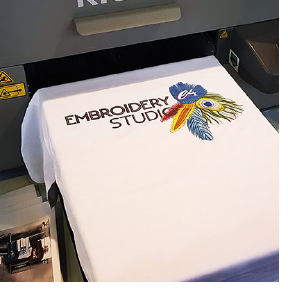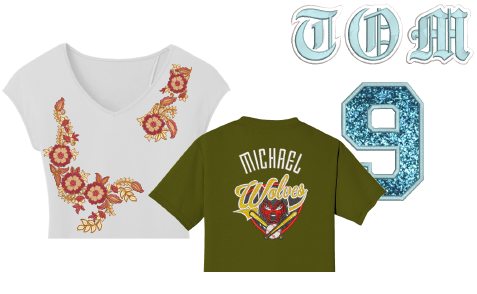
Embroidery is a unique, high-quality decorating process. However, it is not ideal in all cases. Salient factors include design size, fabric weight, order quantities, number of thread-color changes, as well as digitizing and embroidery costs. The rise of Direct to Garment (DTG) and Direct to File (DTF) machines has offered new opportunities for decorators.

The Capture Virtual Decoration Bitmap feature in EmbroideryStudio allows decorators to export high-resolution TrueView images. This is a technique that can provide commercial flexibility for many different processes. ‘Virtual embroidery’ for T-shirts or other lightweight garments are obvious examples. It is even possible to export large-format ‘virtual embroidery logos’ large enough to place on billboards or pull-up banners.

Image resolution depends on a specified DPI (Dots Per Inch). Maximum DPI for printers varies between 600 and 2880 DPI. For garments, good results can be obtained within a range of 200 to 400 DPI. Higher resolutions are available for printing on paper, photo paper, canvas, fabrics, glass, mugs, plaques, wood, metal, etc.
Screen images are typically captured in PNG format because this supports transparency. Most DTG printers and other printing techniques use RIP (Raster Image Processor) software which can use any raster image that supports transparency, including PNG format. Output files can be used as is or as input to any graphic or photo editing software.